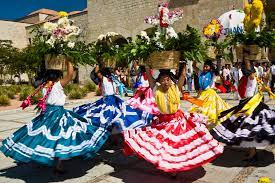Building your Library...Part 2
- fredericksburgrecorders

- Dec 4, 2019
- 2 min read
Today we continue our look into building our libraries with Historic Treatises on performance practice as well as modern books that interpret and discuss those treatises.
Historic Treatises...
1. Ganassi, Sylvestro, and Hildemarie Peter. Opera Intitulata Fontegara Venice 1535: A Treatise on the Art of Playing the Recorder and Free Ornamentation. Berlin: Robert Lienau, 1959.
This is one of the earliest and most important treatises on renaissance recorder technique. An original copy in Italian is up on IMSLP. I’ve been trying to get a copy of the translated version for almost a year, as it seems to be out of print.
2. Hotteterre, J. M. Principles of the Flute, Recorder and Oboe. Translated by Paul Marshall Douglass. Place of Publication Not Identified, NY: Dover Pubns., 1968.
One of the first 18th century treatises to talk about the recorder’s technique as distinct from the “other” flutes. This very short treatise contains a fingering and trill chart. It also discusses posture and articulation.
3. Quantz, J.J. On Playing the Flute. Translated by Edward R. Reilly. 2nd ed. Boston, MA: Northeastern University Press, 2001.
Only 50 pages talk about the transverse flute specifically. The remainder of the treatise includes a comprehensive overview of performance practice in the mid-18th century.
Performance Practice (Modern discussions)…
1. Mather, Betty B., and David Lasocki. Free Ornamentation in Woodwind Music 1700-1775: An Anthology with Introduction. New York, NY: McGinnis & Marx Music Publisher, 1976.
B.B. Mather’s books are very clear and very precise. Free ornamentation is basically “Baroque Improvising.”
2. Mather, Betty Bang. Interpretation of French Music from 1675-1775 for Woodwind and Other Performers. Additional Comments on German and Italian Music. New York, NY: McGinnis & Marx Music Publishers, 1973.
Clear, and specific.
3. Rowland-Jones, Anthony. Playing Recorder Sonatas: Interpretation and Technique. Oxford: Clarendon Press, 1992.
This volume is supposed to ease one out of consort playing and into solo playing. The basic rules for ornamentation and style in the 18th century are covered. Examples given.
4. Veilhan, Jean-Claude. THE RULES of MUSICAL INTERPRETATION in the BAROQUE ERA (17TH & 18TH Centuries). Paris: Alphonse LeDuc.
This book is about stylistic practices common to all instruments and draws heavily from the treatise by Quantz. Mr. Veilhan does a good job of sifting through a lot of information.







Comments